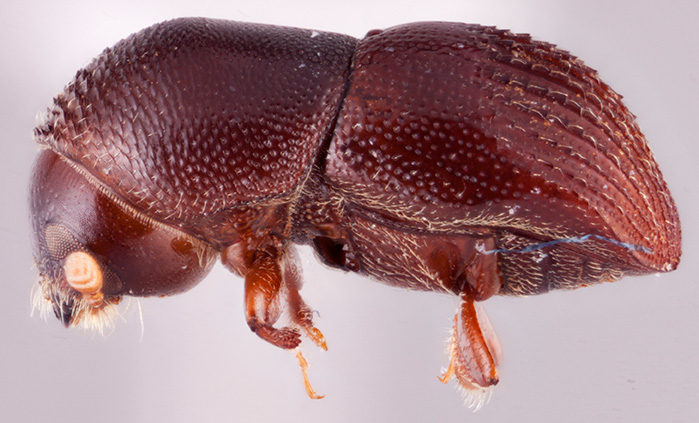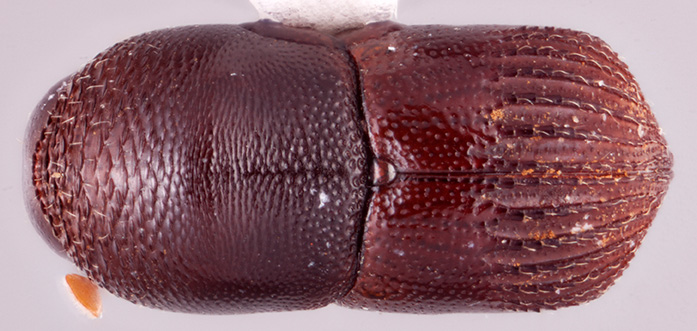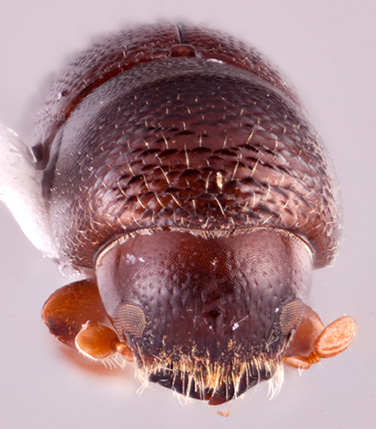Arixyleborus grandis
|
Arixyleborus grandis lateral; R.K. Osborn |
|
Arixyleborus grandis dorsal; R.K. Osborn |
|
Arixyleborus grandis declivity; R.K. Osborn |
|
Arixyleborus grandis frontal; R.K. Osborn |
Taxonomic history
Xyleboricus grandis Schedl, 1942c: 27.
Arixyleborus grandis (Schedl): Schedl, 1952d: 161.
Diagnosis
3.2−3.5 mm long (mean = 3.43 mm; n = 4); 2.13−2.33 times as long as wide. This species is distinguished by the protibiaprotibia:
tibia of the first pair of legs
posteriorposterior:
toward the rear end; opposite of anterior
 face inflatedinflated:
face inflatedinflated:
blown up; distended
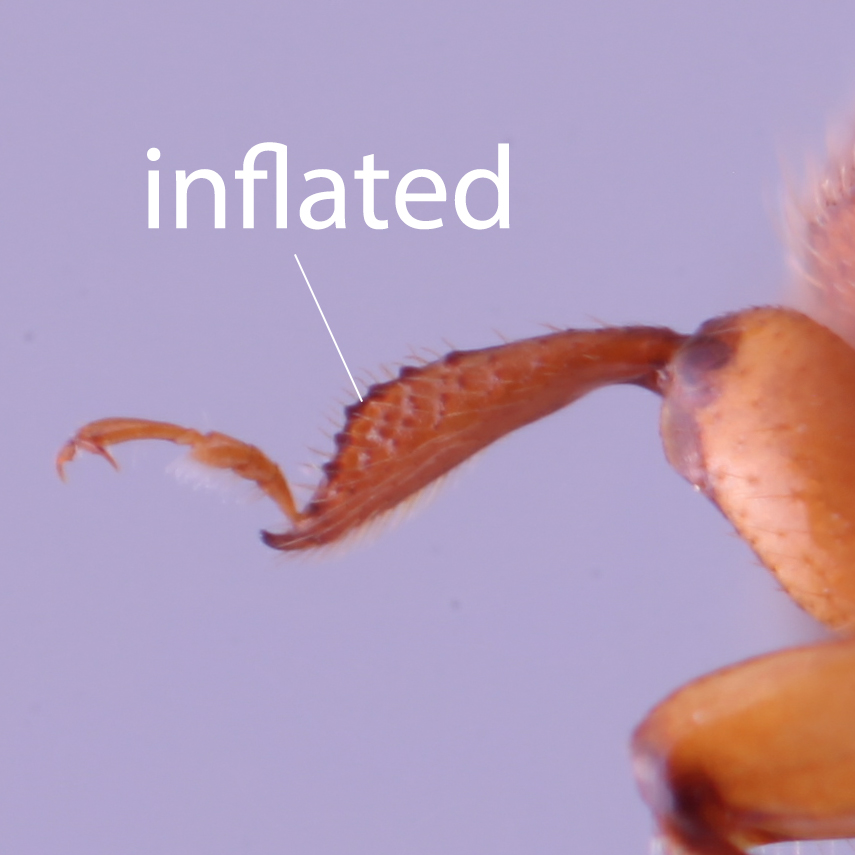 and granulate; antennalantennal:
and granulate; antennalantennal:
pertaining to the antennae
club broader than tall; posterolateralposterolateral:
relating to end of the side part/portion
 carinacarina:
carinacarina:
an elevated ridge or keel, not necessarily high or acute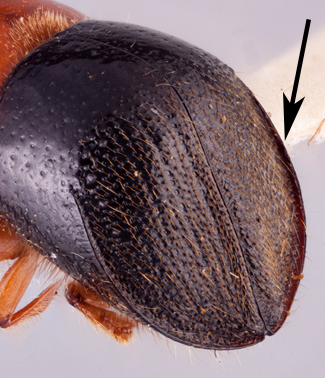 costate; pronotumpronotum:
costate; pronotumpronotum:
the dorsal surface of the thorax
laterallateral:
pertaining to the side
 margin distinctly costate, nearly carinate; pronotumpronotum:
margin distinctly costate, nearly carinate; pronotumpronotum:
the dorsal surface of the thorax
anterioranterior:
the front or forward; opposite of posterior margin elevated with row of serrations; large size; strial furrows three times the width of interstrial ridges on discdisc:
margin elevated with row of serrations; large size; strial furrows three times the width of interstrial ridges on discdisc:
the flat central upper surface of any body part (e.g. pronotum and elytra) ; interstrial ridges setose, setaeseta:
; interstrial ridges setose, setaeseta:
small hair-like or scale-like structure
recumbentrecumbent:
pertaining to setae that are flat against the cuticle
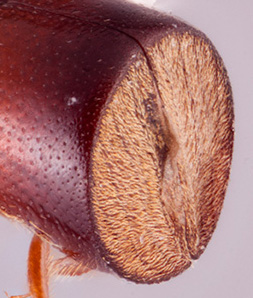 , hair-like, as long as striastria:
, hair-like, as long as striastria:
punctures in rows, which may or may not be impressed to make grooves 2 width at declivitaldeclivital:
2 width at declivitaldeclivital:
pertaining to the elytral declivity
basebase:
point or edge closest to the body; opposite of apex ; interstrial ridges denticulatedenticulate:
; interstrial ridges denticulatedenticulate:
covered in denticles
; striaestria:
punctures in rows, which may or may not be impressed to make grooves moderately impressedimpressed:
moderately impressedimpressed:
a depression in a surface
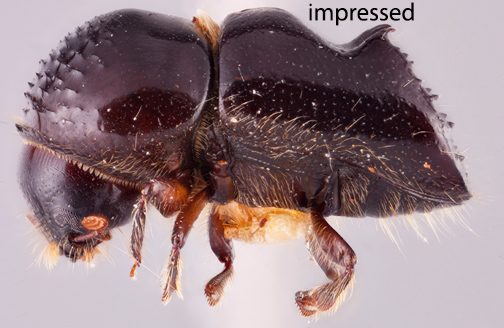 ; and elytralelytral:
; and elytralelytral:
pertaining to the elytra
declivitydeclivity:
downward slope of either the pronotum or elytra
 weakly shagreenedshagreened:
weakly shagreenedshagreened:
covered with a closely-set roughness, like shark skin 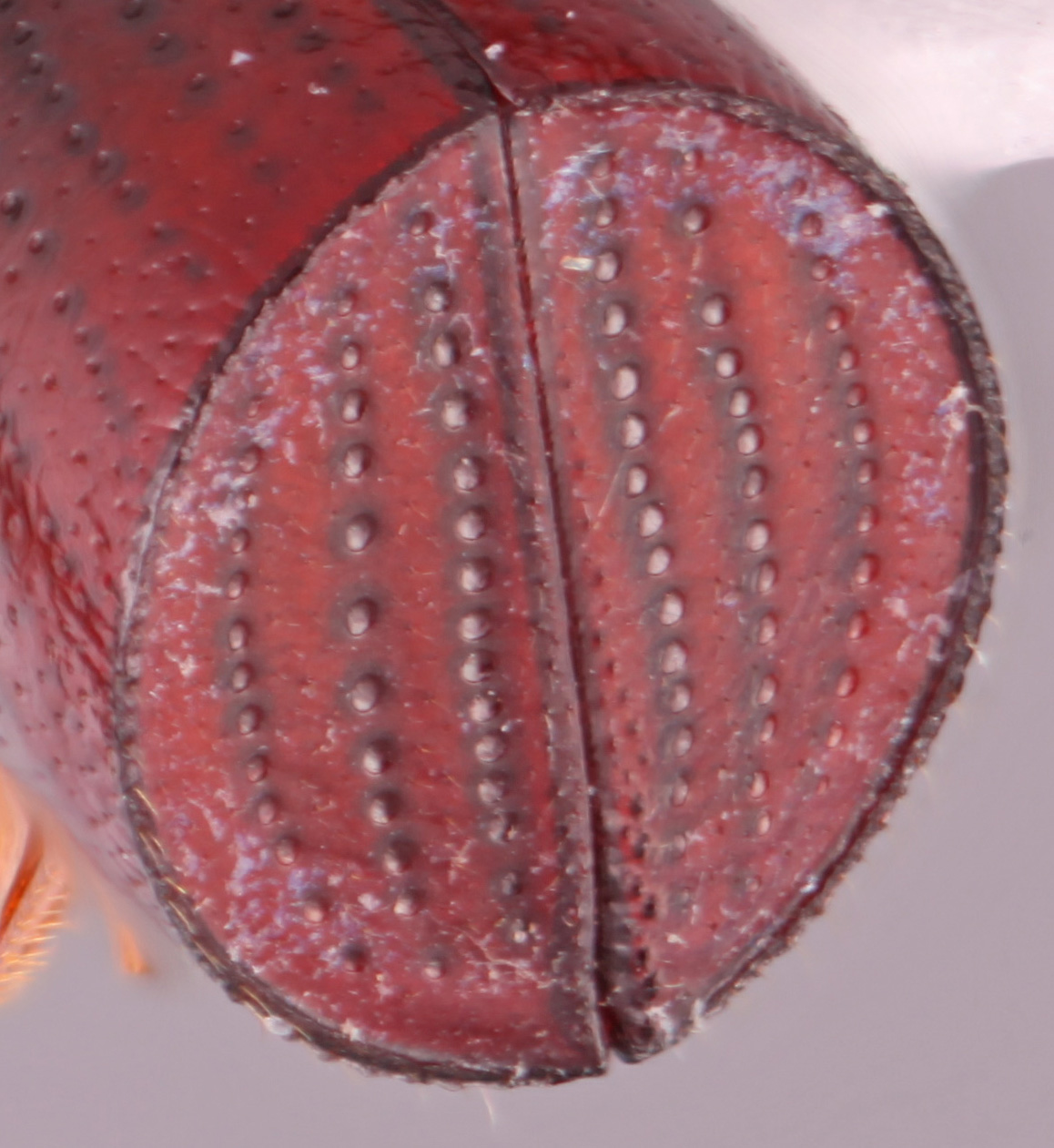 , interstrial ridges almost appear shiningshining:
, interstrial ridges almost appear shiningshining:
appearing glossy or bright in luster; referring to a surface that is polished and reflects light well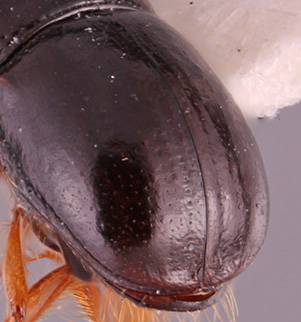 .
.
May be confused with
Arixyleborus malayensis, A. tuberculatus, and A. yakushimanus
Distribution
Indonesia (Java), East Malaysia, New Guinea, Philippines, Thailand
Host plants
recorded from Canarium (Burseraceae), Dipterocarpus (Dipterocarpaceae), Mangifera (Anacardiaceae), and Palaquium (Sapotaceae) (Beaver et al. 2014Beaver et al. 2014:
Beaver RA, Sittichaya W, Liu L-Y. 2014. A synopsis of the scolytine ambrosia beetles of Thailand (Coleoptera: Curculionidae: Scolytinae). Zootaxa 3875: 1-82. http://dx.doi.org/10.11646/zootaxa.3875.1.1)
Remarks
Kalshoven (1959b) gives some details of gallery systems and brood found in Canarium in Java.
DNA data
specimens not available for sequencing

